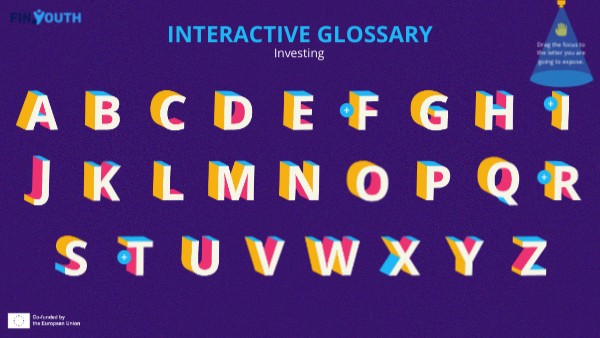
Absolutely! Here’s a 1200-word article on interactive infographics for investing, covering various aspects and considerations.
Interactive Infographics: A Powerful Tool for Smarter Investing
In the fast-paced world of investing, where data is king and decisions are made in the blink of an eye, the ability to quickly grasp complex information can be a significant advantage. Traditional methods of presenting investment data, such as static charts and lengthy reports, often fall short of effectively conveying the nuances and interconnectedness of the market. Enter interactive infographics – a dynamic and engaging approach to visualizing investment data that empowers investors to make more informed decisions.
The Evolution of Data Visualization in Investing
For decades, investors have relied on financial statements, market analyses, and expert opinions to guide their investment strategies. These sources of information, while valuable, can be overwhelming and difficult to interpret for those without a strong financial background. Static charts and graphs, while helpful in illustrating specific trends, often lack the depth and interactivity needed to explore data from multiple angles.
The advent of interactive infographics has revolutionized the way investment data is presented and consumed. By combining visual elements with interactive features, these infographics allow investors to delve deeper into the data, explore different scenarios, and gain a more holistic understanding of the market.
What are Interactive Infographics?
Interactive infographics are visual representations of data that allow users to actively engage with the information. Unlike static infographics, which present data in a fixed format, interactive infographics enable users to:
- Explore Data: Hover over elements to reveal additional details, tooltips, and contextual information.
- Filter and Sort: Customize the view by selecting specific data points, time periods, or investment categories.
- Drill Down: Click on specific areas to access more granular data and analysis.
- Compare Scenarios: Simulate different investment strategies and see the potential outcomes.
- Personalize the Experience: Tailor the infographic to their individual preferences and investment goals.
Benefits of Using Interactive Infographics for Investing
Interactive infographics offer a multitude of benefits for investors of all levels:
- Enhanced Understanding: By presenting data in a visual and interactive format, interactive infographics make complex information more accessible and easier to understand.
- Improved Decision-Making: The ability to explore data from multiple angles and simulate different scenarios empowers investors to make more informed decisions.
- Increased Engagement: Interactive elements keep users engaged and encourage them to explore the data more thoroughly.
- Personalized Experience: Interactive infographics can be tailored to individual preferences and investment goals, providing a more relevant and meaningful experience.
- Time Savings: Interactive infographics allow investors to quickly identify key trends and insights, saving them time and effort in analyzing data.
- Better Data Retention: Visual information is processed more efficiently by the brain, leading to better retention of key data points and insights.
- Storytelling with Data: Interactive infographics can weave a compelling narrative around the data, making it easier for investors to understand the context and implications of the information.
Examples of Interactive Infographics in Investing
Interactive infographics can be used to visualize a wide range of investment data, including:
- Market Trends: Visualize historical market performance, identify trends, and compare different asset classes.
- Company Performance: Explore a company’s financial statements, analyze key performance indicators (KPIs), and compare it to its competitors.
- Portfolio Analysis: Track the performance of your portfolio, analyze asset allocation, and identify areas for improvement.
- Risk Assessment: Assess the risk associated with different investments and develop a risk management strategy.
- Economic Indicators: Monitor key economic indicators, such as GDP growth, inflation, and unemployment, and understand their impact on the market.
- Real Estate Investments: Explore real estate trends, property values, and rental yields in different locations.
- Cryptocurrency Analysis: Track the performance of cryptocurrencies, analyze market trends, and assess the risk associated with different digital assets.
Key Features of Effective Interactive Infographics
To be effective, interactive infographics should possess certain key features:
- Clear and Concise Visuals: Use clear and concise visuals to represent data, avoiding clutter and unnecessary complexity.
- Intuitive Navigation: Ensure that the infographic is easy to navigate and that users can quickly find the information they need.
- Meaningful Interactions: Incorporate meaningful interactions that allow users to explore the data in a relevant and insightful way.
- Data Accuracy: Ensure that the data presented in the infographic is accurate and up-to-date.
- Mobile Responsiveness: Optimize the infographic for viewing on different devices, including desktops, tablets, and smartphones.
- Accessibility: Make the infographic accessible to users with disabilities, following accessibility guidelines and best practices.
Tools and Technologies for Creating Interactive Infographics
Several tools and technologies are available for creating interactive infographics, including:
- Data Visualization Software: Tableau, Power BI, and Qlik Sense offer powerful data visualization capabilities and allow you to create interactive dashboards and reports.
- Infographic Design Platforms: Canva, Piktochart, and Visme provide user-friendly interfaces and templates for creating interactive infographics.
- Coding Libraries: D3.js and JavaScript charting libraries enable developers to create highly customized interactive visualizations.
- WordPress Plugins: Plugins like Visualizer and Infogram allow you to embed interactive infographics directly into your WordPress website.
Best Practices for Designing Interactive Infographics
When designing interactive infographics for investing, keep the following best practices in mind:
- Define Your Audience: Understand your target audience and tailor the infographic to their level of knowledge and investment goals.
- Set Clear Objectives: Determine what you want users to learn or achieve by interacting with the infographic.
- Choose the Right Visuals: Select visuals that are appropriate for the data and that effectively communicate the intended message.
- Prioritize User Experience: Design the infographic with the user in mind, ensuring that it is easy to use and engaging.
- Test and Iterate: Test the infographic with real users and make adjustments based on their feedback.
The Future of Interactive Infographics in Investing
As technology continues to evolve, interactive infographics are poised to play an even greater role in the world of investing. The integration of artificial intelligence (AI) and machine learning (ML) will enable the creation of more sophisticated and personalized interactive experiences. Imagine an infographic that can predict market trends based on historical data, analyze your risk tolerance, and recommend investment strategies tailored to your individual needs.
Furthermore, the rise of virtual reality (VR) and augmented reality (AR) could revolutionize the way investors interact with data. Imagine stepping into a virtual trading floor where you can explore market data in a 3D environment, interact with virtual analysts, and make investment decisions in real-time.
Conclusion
Interactive infographics are a powerful tool for empowering investors to make more informed decisions. By combining visual elements with interactive features, these infographics make complex data more accessible, engaging, and personalized. As technology continues to advance, interactive infographics are poised to play an even greater role in the future of investing, enabling investors to navigate the market with greater confidence and success. Whether you’re a seasoned investor or just starting, embracing interactive infographics can be a game-changer in your investment journey.



